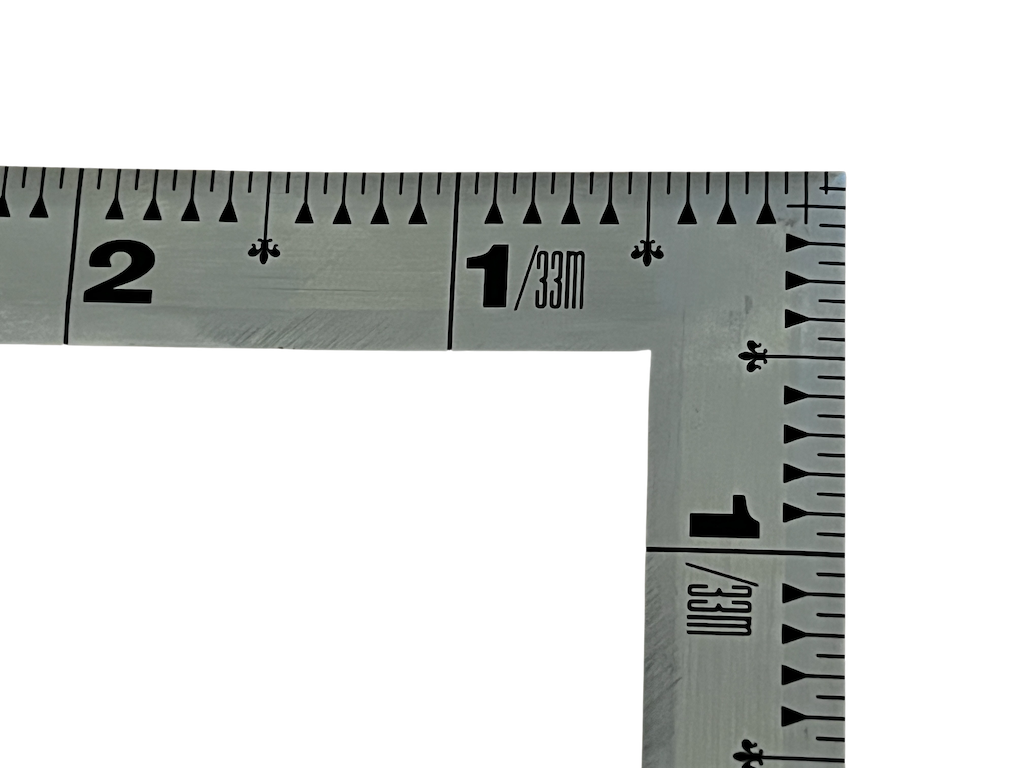Shakkanhou — traditional Japanese units
Traditional measurement units. Part 2 in a series.
This is part two in a series of posts:
- Sashigane 1: Introduction
- Sashigane 2: Traditional Units (this post)
- Sashigane 3: Physical design
- Sashigane 4: Hyoume and Urame
- Sashigane 5: Kou, ko, gen
- Sashigane 6: Simple usage
- Sashigane 7: Right triangle magic
Traditional measurement units
Measurement units are a tricky subject, especially when talking about techniques that span centuries and artisans separated by great distances. Don’t take anything I write here as authoritative or historically accurate in any way. Most of these units originated in China originally.
To keep things simple, I’ve only described the most common traditional measurements, but I know for certain that these traditional units varied over time as well as between the eastern and western parts of the country (much less China). As the old saw states, that’s the great thing about standards: there are so many to choose from!
The measurement system I describe is called shakkanhou (尺貫法) . The system came from China originally, though the standard unit lengths doubtless changed many times over the centuries and miles of travel.
For building construction, the most important traditional linear units are:
The shaku ( 尺 ). This unit is still used by Japanese carpenters today, but it’s becoming less common (sort of like an Englishman referring to his weight in “stone”). The cool thing is that 1尺 is almost exactly one foot (303mm vs. the 304.8mm in a foot). My understanding is that the length was based on the length of a man’s forearm (the span from wrist to elbow).
6尺 makes one ken ( 間 ) or the length of a sleeping human body (with some room to spare — especially in ancient Japan!). This is also pretty close to the standard length of a tatami mat.
(To be pedantic, there are two “standard” sizes of tatami mats: the eastern region uses 田舎間 mats that are roughly 176 cm × 88 cm, while the western region uses 京間 mats that are roughly 190 cm × 95 cm. Both differ from 6 尺×3 尺 which is 181.8 cm × 90.9 cm.)
1尺 is comprised of 10 sun (pronounced “soon”, 寸 ). I find it interesting that western carpenters divided a foot into 12 equal pieces to make fractional divisions easier (it’s trivial to divide 12 into 2, 3, 4, or 6 equal pieces) while Japanese carpenters went decimal. You can think of a sun as a long inch (30.3mm vs. 25.4mm).
Similarly, 1寸 comprises 10 bu (分 ) each of which is 1/100th of a shaku.
Finally, the smallest unit is a rin (厘 ) which is 1/10th of a bu, or 1/1000th of a shaku.
As far as areal units go, there are only two of importance. Both are still used regularly in Japan (as anyone who has rented an apartment can attest).
A single tatami mat is 3尺 x 6尺, which is an areal unit called a jou (畳 ).
Two tatami mats side by side, or six square shaku, is an areal unit called a tsubo (坪 ).
These aren’t the units you are looking for
Today, sashigane can be purchased with either traditional shaku based units (尺貫法 ) or metric units, but many have the same units on both sides of the square (sadly) – you must ask specially for sashigane with urame or kakume scales on the bottom side (to be explained in subsequent articles).
While 尺貫法 sashigane can be easily acquired in Japan (Shinwa Sokutei is one major manufacturer) the system was apparently outlawed during or shortly after the Meiji Restoration. As is their wont, the progressive politicians of the time passed a law (circa 1868) that only metric based units were permitted going forward.
To this day, shaku and sun based measuring tools always have this mysterious mark at various locations: “/33m”:

For the longest time, the author had no idea what those marks meant. They are there to work around the law mandating metric units! 1/33 = 0.0303. So 1/33rd of a meter is 0.0303m or 30.3mm, which just happens to be the length of one sun.
“These are not the old, illegal, sun based measurements you were looking for, Mr. Inspector-san, sir: these are 1/33 meter units!”
The remainder of the series will only discuss shaku based sashigane, where 1尺 is exactly 303mm (as most modern sashigane are marked) but at least be aware that there are regional and historical variations in the absolute lengths. The principles remain the same regardless.
Next up: the physical design of the sashigane